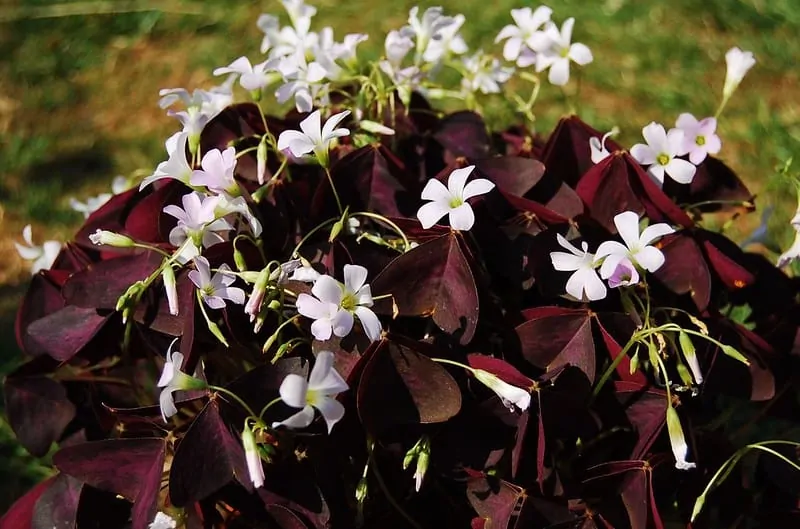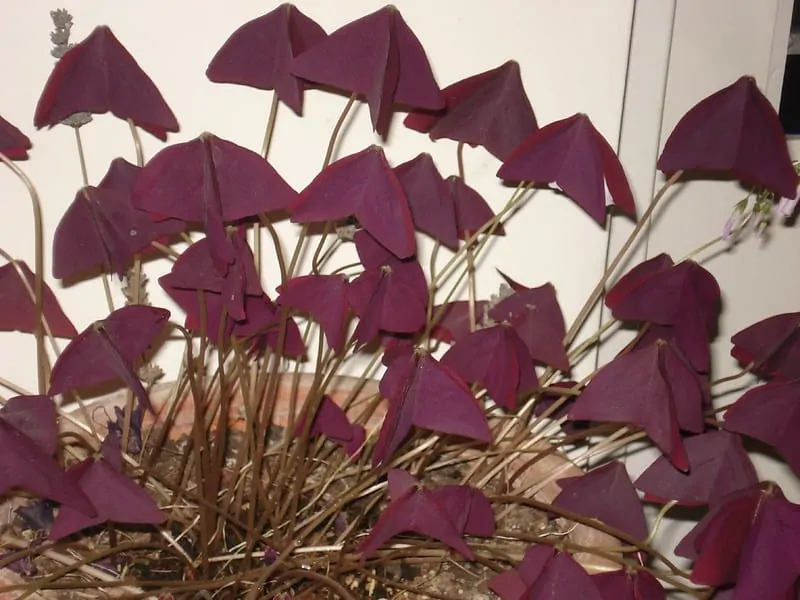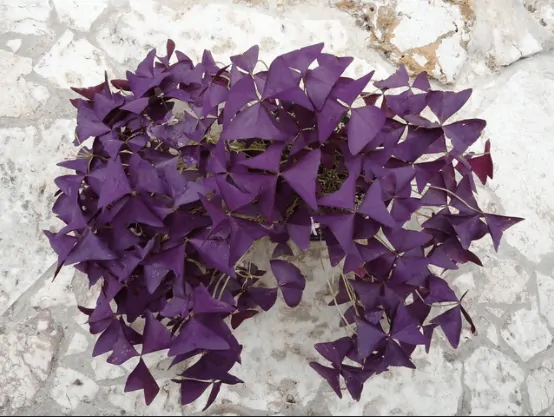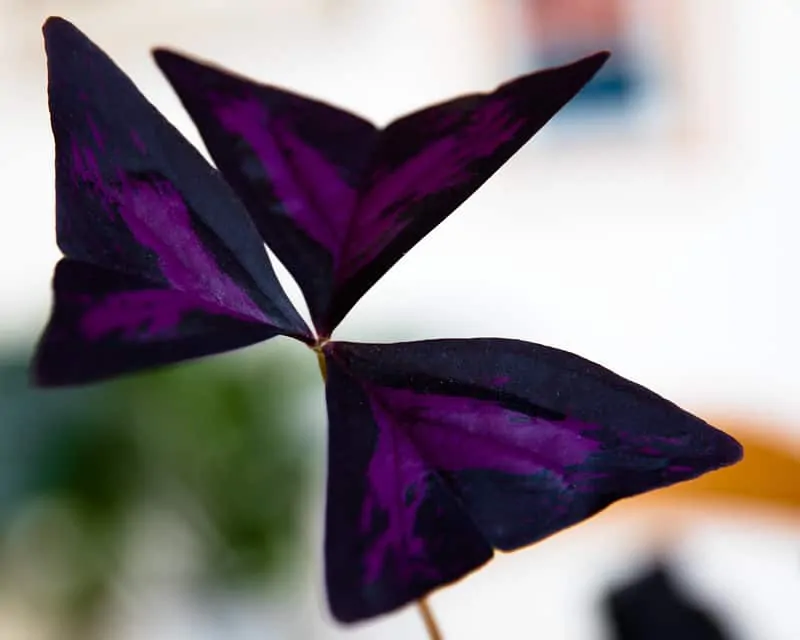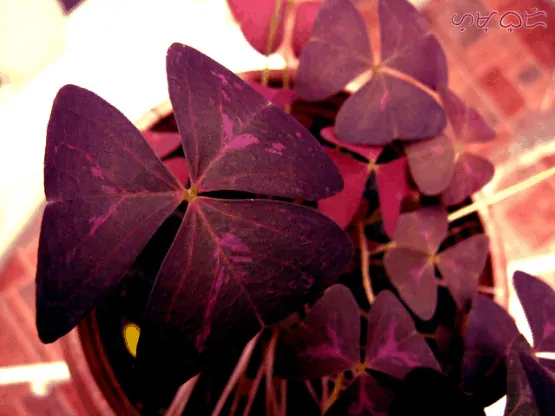Oxalis Triangularis Care Tips And Tricks
Also known as purple shamrock, this plant is easy to grow and impressive to have. Here is how to care for it.
Oxalis Triangularis Care: About Purple Shamrock
It’s originally from Brazil and was introduced in the US as a variant of the green shamrock. It is, however, known as false shamrock as well as purple shamrock simply because it is not a type of clover. It may look like one to the untrained eye, but while clover is quite aggressive and spreads fast, Oxalis is a well-behaved pot plant.
Its name comes from its oxalic acid content that gives it a bitter taste and makes it toxic to humans in large quantities and generally toxic to pets. The Triangularis part of its name comes from the shape of its leaves. Keep an eye on them at night and notice how they fold inwards, reminding of butterflies!
How To Grow Oxalis Triangularis
Oxalis Triangularis bulbs look like small pine cones and you can find them at your local gardening store, or, if you want, you can get a few from a friend who has had their purple shamrock for some years. Plant them about an inch underground in the right soil about an inch apart. Water sparsely and new leaves should start growing in about one to two weeks.
You can try growing it from seeds also, but it will take longer until you get a beautiful, lush plant. This is because the bulbs have to develop first, then the leaves come in. Plant the seeds just under the surface of the soil and mist daily with a spray bottle until you see the first tendrils growing. Keep watering often and very little, preferably with a spray bottle, until you see the bulbs starting to rise above the ground.
Alternatively, you can just buy a ready grown plant from a florist or gardening store. They will usually come in small pots so replant in a bigger one a few days after you brought it home.
Oxalis Triangularis Care Guide
-
Light
Oxalis Triangularis needs a good amount of light, but not direct sunlight. It does well in the second row of plants near a bright window, or even on a table in the middle of a south-facing room. It can survive semi-shady places as well, although it may grow more spidery and less lush. If you notice that its stems are getting longer but there are no leaves, consider moving it closer to a window. It’s better it has too little light, as too much will burn the leaves.
-
Water and humidity
Allow the top 1-2 inches of soil to dry out before watering to avoid root rot. Gently add water to the pot to avoid washing the soil away from the bulbs and pour small quantities. When the water starts coming out the draining holes, stop watering, let it sit for a few minutes then drain the excess.
In terms of humidity, Oxalis Triangularis care is very simple. It does just fine with the moisture in most homes. And if you keep it along with other plants in a terrarium, it will do great with their required level of humidity. Keep in mind that the more humid the environment, the less watering it will need.
-
Temperature
Purple shamrock needs a temperate climate of 60 to 75°F ( 15 to 24°C) but can survive as low as 50°F (10°C). If temperatures drop or rise too much, it will simply go dormant and it will require a “reset”. For that, leave it in a dark spot and do not water it until new eaves start growing, then resume the usual treatment.
-
Soil and fertilizer
Oxalis Triangularis will grow in any relatively fertile soil, but it prefers a rich potting mix or even a peat-based soil. Use this helpful guide to pick the best one. Any soil, rich as it may be, runs dry eventually, so after about two years of keeping it in the same pot either repot with fresh soil or start fertilizing every six months. Use a slow-release, organic fertilizer for best effects. Be careful to not over-fertilize as it can burn the roots!
-
Pruning and propagation
Oxalis Triangularis care includes pruning the dead leaves by snipping them with small scissors or snapping them off once they are dry enough and occasionally removing excess bulbs. Purple shamrock does bloom, but indoors it will not create seeds because it needs to be pollinated. In order to propagate it, remove a bulb or two and plant them in a new pot. Oxalis constantly grows new bulbs so it will be just fine.
Oxalis Triangularis Care Summary
Light
Semi-shade to indirect brightWater
Approximately once a weekTemperature
60 to 75°F ( 15 to 24°C)Toxicity
Toxic to petsDifficulty
EasyOxalis Tirangularis Care: Pests and Diseases
-
Rust
Oxalis is susceptible to rust, which is a fungal infection on the leaves. It looks like a mold growing on the lower parts of the leaves and will require special treatment to get rid of. You can use a fungicide recommended at your gardening store but there is no way to cure the affected leaves. Best cut them off and let the plant start over.
-
Ringspot
This is caused by the ringspot virus which appeared because of a plant lice infestation. Treat it with plant safe insecticides and plenty of patience.
-
Sunburn
This looks like your Oxalis leaves are browning and crumpling at the tips. Usually, this happens because the plant was exposed to too much direct sunlight or moved too fast from a darker place to a lighter one. Treat it by moving the plant to a slightly darker spot and cutting off the affected leaves.
Where To Grow Your Oxalis
Purple shamrock works great as a small indoor plant, both in a pot alone and in a terrarium, but it can be grown outdoors as well if the temperature is mild enough in winter. And if not, treat it as you would any bulbous plant: dig out the bulbs in autumn when all the leaves are gone, keep them indoors and plant them again in spring. Keep with the same light and watering requirements, if you’re growing it in a pot or let it pick its favorite spots and water occasionally if you’re using it as a lawn.
Final Thoughts
Do you need advice, have a comment or a question about Oxalis Triangularis care? Let me know in the comment section below!

